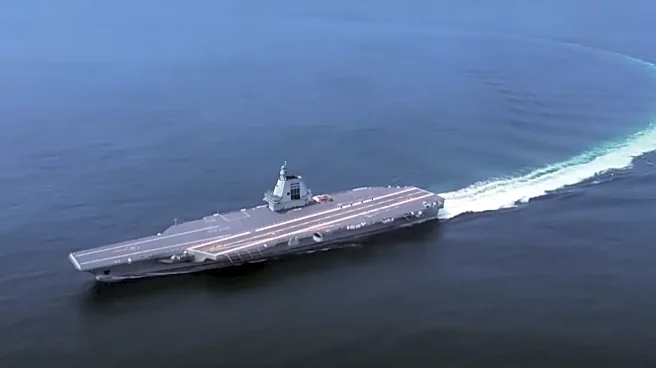Rapid Read • 7 min read
The navies of the Philippines, Australia, and Canada are conducting a joint sail in the South China Sea, an area known for heightened tensions following a recent collision between two Chinese vessels. The operation involves the Philippine frigate BRP Jose Rizal, Australian destroyer HMAS Brisbane, and Canadian frigate HMCS Ville de Quebec. According to Philippine military official Colonel Dennis Fernandez, the exercise is based on the principle of a free and open Indo-Pacific, aiming to promote peace and prosperity in the region. The joint sail is part of the ongoing military drills between the Philippines and Australia, known as ALON, which began on August 15 and includes amphibious and land operations as well as live fire exercises. This year's iteration is the largest to date, involving 3,600 troops from both countries, a Canadian Navy contingent, and U.S. Marines.
AD
The joint naval exercise underscores the strategic partnerships and military cooperation among the Philippines, Australia, and Canada in response to security challenges in the South China Sea. This region is crucial for global commerce, with $3 trillion of annual shipborne trade passing through. The Philippines aims to increase the frequency of joint sails with foreign partners to deter China's aggressive actions in the area. Such activities are significant for maintaining regional stability and ensuring the free flow of trade. The involvement of multiple nations highlights the international concern over China's territorial claims and the importance of collaborative defense strategies.
The joint sail is expected to conclude in Palawan, with potential for increased maritime cooperative activities involving the Philippines and its allies. The Philippines has expressed intentions to conduct more joint passages with foreign partners, including treaty ally the United States. These activities may lead to further diplomatic engagements and military collaborations aimed at countering China's influence in the South China Sea. The ongoing exercises could also prompt reactions from China, potentially affecting regional diplomatic relations and security dynamics.
AD
More Stories You Might Enjoy












